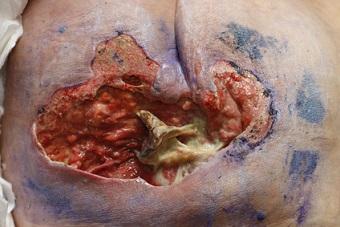Pressure Injury Prevention: Taking It Back to the Basics During National Nurses Week
May 7, 2020
With National Nurses Week approaching, we will once again be seeing the work of Florence Nightingale highlighted, along with the concepts and values that have built the nursing profession. As we've heard many times, nursing is an art and a science. The basic foundations and concepts of nursing are built from evidence, books, and what we learn in school from our teachers, professors, and clinical instructors. The science behind nursing is important—there are formulas, math, research, memorizations, and concepts that must come from a book. However, there is also a huge piece of nursing that comes from our hearts. Nursing is caring, compassion, kindness, and wanting what is best for someone else. Nursing is wanting to help our patients and our peers. Being a nurse is a calling and a passion, and that piece can’t always be learned... it starts in our hearts, and it shows in our practice.
Back to Basics: Wound Care
The basic foundations of wound care nursing also very closely relate to nursing practice in general. Do no harm, primary prevention, treatment, evidenced-based practice… all of these concepts also very closely guide the practice of wound care nursing. It is important to take a step back from the treatments, products, and modalities and bring it back to the basics. Remember, we always have to look at the entire person—what's going on with them? Then, look at the wound—what's causing it? If we don't identify and treat the cause of the wound, we won't be able to properly care for or heal it.
If there is an underlying issue, a disease, malnutrition, underlying infection, malignancy, unrelieved pressure, an untreated systemic illness, etc., we need to identify and treat that before we can effectively manage the wound. Again, a famous wound care quote that I've shared in prior blogs and that always rings true: "Manage the whole person, not just the hole in the person." So, bringing it back to basics… remove the source of pressure, treat the cause, put prevention interventions into place based on the patient's Braden score and overall picture. Involve other disciplines, take an evidence-based approach, and be persistent. Identify prior treatments and goals of future care with your patient, put interventions into place, and evaluate and re-evaluate routinely.
Remember hand writing care plans and using the nursing process (assess, diagnose, plan, implement, evaluate) in nursing school? Well, we continue to do it every day… so much so, that we probably don't even realize when we're doing it. We take it back to basics, what we've learned in school. We assess our patients, formulate a preliminary diagnosis, develop a plan for treatment or care, implement that plan, and evaluate the results. If we don't see improvement, we re-evaluate and adjust as needed.
Conclusion
All while we're developing a plan and implementing, we keep the basics in mind… remove the pressure, primary prevention, is the wound moist or dry? Is the patient malnourished? Do they have pre-existing comorbidities that could pose barriers to healing? Are these comorbidities well managed? We are always thinking and re-evaluating in our heads to formulate the best, evidence-based nursing plan of care for our patients. As we move into National Nurses Week, may we take some time to bring things back to basics, identify the cause and treat it, help one another, and remember why we went into nursing. As we honor the "lady with the lamp," on May 12th, may we also honor ourselves and our peers for the work we do and continue to do each and every day! Happy Nurses Week!
About the Author
Holly is a board-certified gerontological nurse and advanced practice wound, ostomy, and continence nurse coordinator at The Department of Veterans Affairs Medical Center in Cleveland, Ohio. She has a passion for education, teaching, and our veterans. Holly has been practicing in WOC nursing for approximately six years. She has much experience with the long-term care population and chronic wounds as well as pressure injuries, diabetic ulcers, venous and arterial wounds, surgical wounds, radiation dermatitis, and wounds requiring advanced wound therapy for healing. Holly enjoys teaching new nurses about wound care and, most importantly, pressure injury prevention. She enjoys working with each patient to come up with an individualized plan of care based on their needs and overall medical situation. She values the importance of taking an interprofessional approach with wound care and prevention overall, and involves each member of the health care team as much as possible. She also values the significance of the support of leadership within her facility and the overall impact of great teamwork for positive outcomes.
The views and opinions expressed in this blog are solely those of the author, and do not represent the views of WoundSource, HMP Global, its affiliates, or subsidiary companies.













Follow WoundSource
Tweets by WoundSource